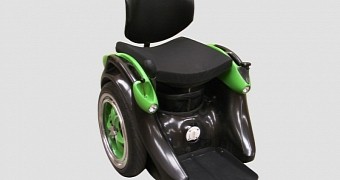Although the Segway wasn't the best personal mobility device after all, and while even wackier DIY devices came along to replace it, the only ones who really needed such a device, the disable people, were ignored for too long.
However, Kevin Halsall, the Ogo's inventor, found a way to turn the Segway concept towards those who don't have to worry about looking ridiculous while going on two wheels in downtown cities. Being a hands-free electric wheelchair, the Ogo is made from a rebuilt Segway. Kevin Halsall bought a $14,000 Segway, stripped apart and then rebuilt it with wider wheels, this way managing to build an impressive wheelchair.
The initial version of the Ogo was developed in 2011 by Halstall, when he invented it for his paraplegic friend, being basically a Segway with a bolt-on seat that is still in use by his friend. Halstall, being a plastic products designer, has hand-built the fiberglass wheelchair with Segway for its guts. Right now, Halstall made a third prototype of the machine and hopes that, with some final tweaks and some proper funding, it may enter mass production. The current Ogo can reach a top speed of 20km/h.
What's fantastic about it, however, is that the Ogo is electric powered, and unlike the Segway, it doesn't steer by a user twisting a handlebar but it's made ultra-responsive with the user controlling it with their core muscles. It accelerates while leaning forward and brakes while leaning back.
According to Stuff, the hands-free chair is selected as one of the ten finalists in the Innovate awards, and a winner will be announced in August.

 14 DAY TRIAL //
14 DAY TRIAL //